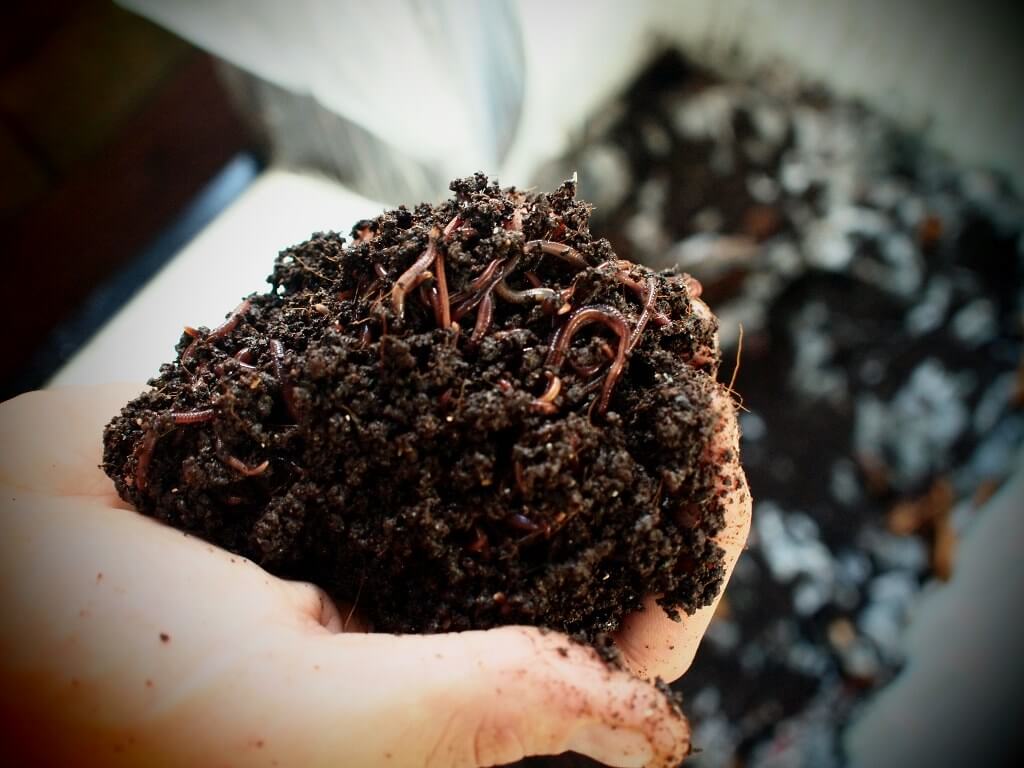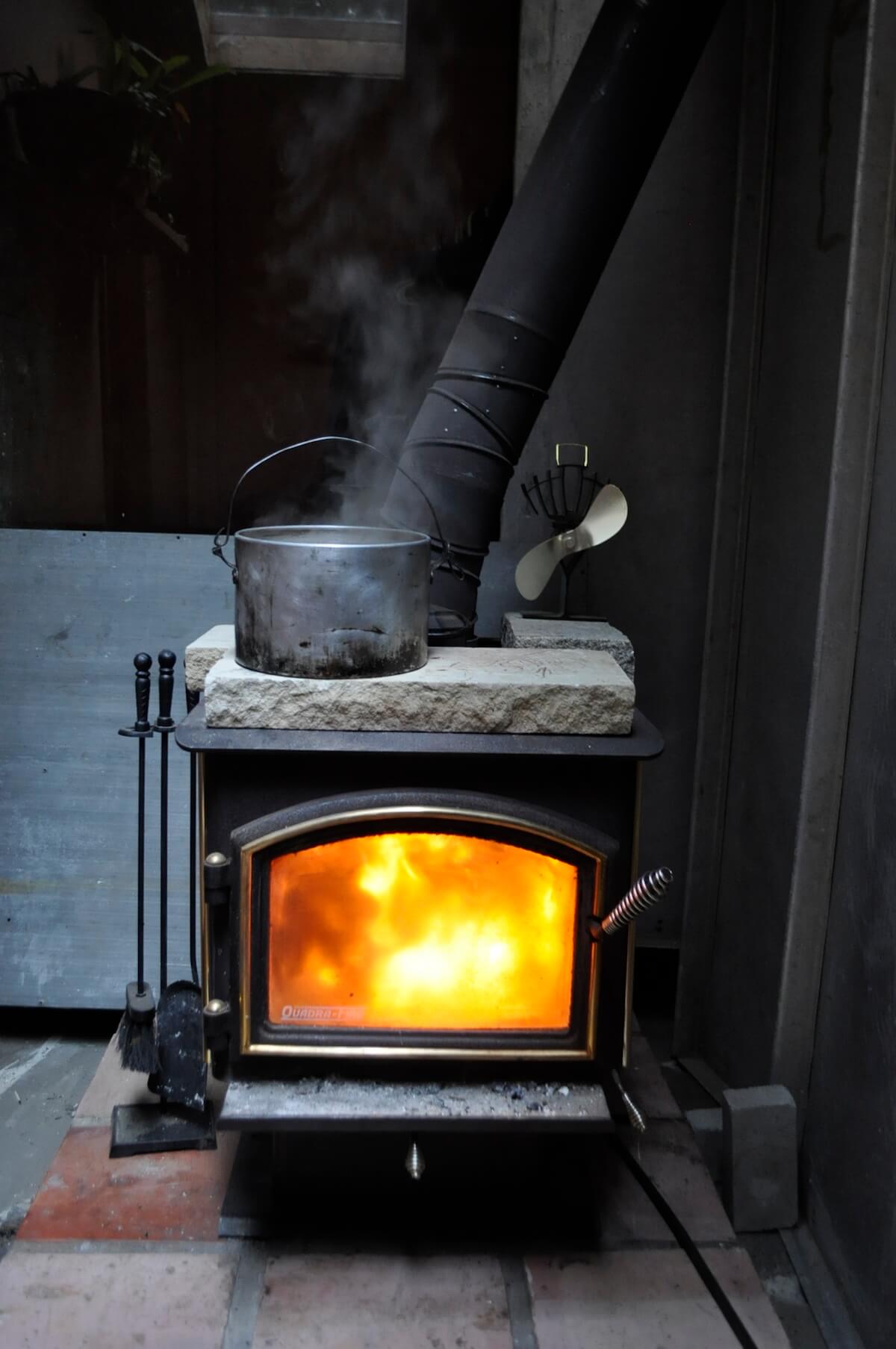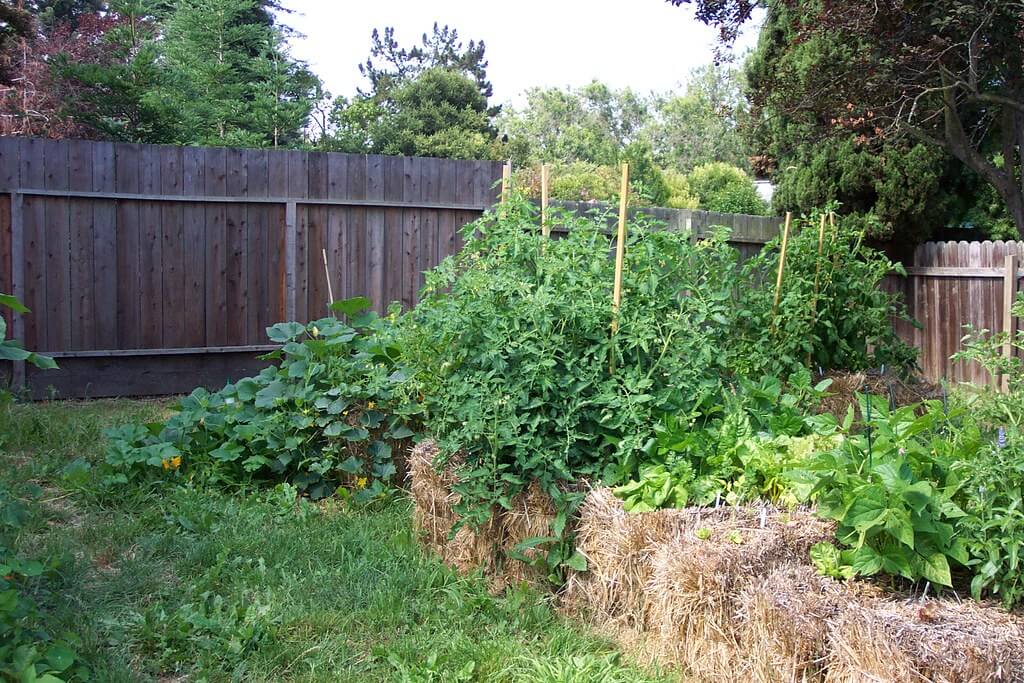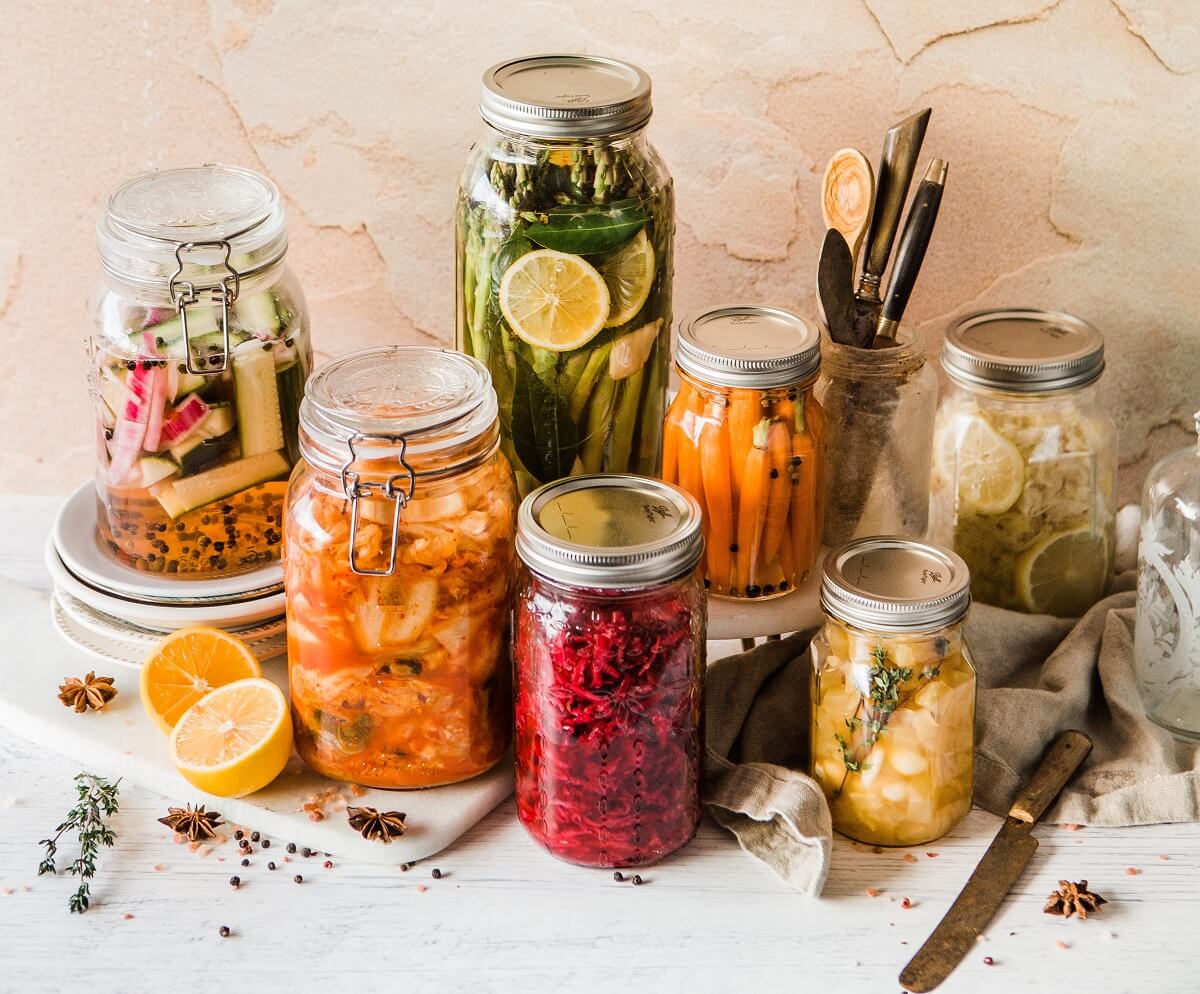The (most recent) Back-to-the-Land Movement may have peaked in the 60s and 70s, but that doesn’t mean people haven’t had the desire for a more land-based way of life every decade before and since.
Many armchair homesteaders find themselves tirelessly reading through the Storey’s Guides to Livestock at their local library, browsing websites like Insteading to get inspiration and ideas, and subscribing to rural-oriented magazines like Backwoods Home or Grit, to get a bi-monthly dose of hope their dreams might, just might find root in a piney wood, mountain valley, or wind-swept plain … someday.
That “someday” dream can be haunting, however, if you’re stuck in the city or suburbs. Maybe you’ve recently graduated college and don’t have much financial oomph to set you on your way. Maybe your spouse doesn’t share the desire for self-sufficiency and is counting down the days until they call a drone to deliver an app-ordered pizza directly to their window. Maybe you’re dealing with a heavy-handed Home Owner’s Association (HOA) and aren’t allowed to do what you want to do. Or, you have no idea if you could actually do it, and doubt yourself.
Many of us have been there. My best advice? Start practicing homesteading where you are, wherever you are, land or not. Though some skills can only be honed when you have the animals or space to do it, there are several others that you can pick up here and now, equipping you with knowledge, experience, and, perhaps more importantly, much-needed encouragement. Many of these skills or ideas can be implemented in the home or backyard, even if you’re renting or have to deal with HOA restrictions.
So with all that said, here are eight skills you might be able to practice for homesteading while living in a city or the suburbs.
1. Subtle Composting

Compost is an essential element of gardening — as crucial as the seeds and soil themselves. Without a constant application of nutrition, soil eventually gets depleted, loses tilth, and doesn’t grow food like it used to.
Sadly, many suburban communities look down on compost piles, even when they aren’t discouraged in HOA guidelines. Never mind that a properly maintained compost pile is stink-free and an excellent way to manage and recycle otherwise wasted organic material. The stereotype endures that compost piles are odoriferous raccoon feeding stations that indecent people build and promptly neglect.
There are a few ways you can work around the anti-compost pile stigma in the strictest of communities. First off, you might quietly build a compost pile anyway, and merely maintain it — any gardener knows there’s no stink from well-kept compost. Maybe offer surplus tomatoes to your neighbors to keep relations friendly, and they’ll not rat you out.

For others, vermicomposting might be the answer. You can employ hundreds of worms to convert waste food into valuable soil amendments, and the best part is, they don’t need to be outside. Vermicompost bins can handily fit under the kitchen sink or in the basement, keeping your soil-building mission out of the public eye.
Another option is to bury food scraps directly in the garden. You might do this between rows of vegetables, or as an alternative, you may dedicate a certain, well-mulched portion of the garden as a buried compost area, allowing the soil nutrition to slowly break down through the growing season while gardening as normal in the other portions. Merely rotate which bed is fed every year, and you’ll be enriching your garden on the sly.
2. Using a Wood Stove

I know this one is impossible if you’re renting, but it is a worthy project for anyone who owns their home and wants to take their DIY skills to a new level. Installing and using a wood stove gives you a whole new body of experience.
With a wood stove, you’ll have to learn how to acquire, cut, and season your own firewood. You’ll have to understand how to maintain the chimney for creosote-free burning. You’ll have an off-grid source of heat in the event of a power outage. You’ll have a cooking surface powered by wood, rather than purchased electricity or gas. And best of all, you’ll have the warmest of cheery, orange glows to fill the house with comfort and take the chill out of the winter air.
Check out our earlier article on metal wood stoves for more information on the care and keeping of the “fireplace in a box.”
When we lived in the city, I’m sure our out-of-place wood stove caused our neighbors to raise a set of “what-a-weirdo” eyebrows. But what it also did was give us a huge tool to practice self-sufficiency and off-grid living, and to feel we were edging closer to our homestead dream.
3. Straw Bale Gardening

This is a great way to get started gardening without making a lasting impact on your current backyard. If you’re renting, or hoping to sell your urban home once you make the Big Move, this can preserve the backyard and allow it to easily regress to “normal” for whoever owns it after you’ve moved.
The basic premise is to use rotting straw bales as (relatively) instant raised beds. Straw bales are cheap to buy, and easy to move. To make a straw bale garden, first arrange the bales in the shape of your garden. Then soak them through with water and some bacteria-rich manure tea to get them “cooking” and rotting (if you have no manure on hand, you can easily find farms that are giving away the stuff with a little bit of Craigslist hunting and well-placed phone calls). Once the bales have been prepared (a good chore to do in the winter, before spring planting), and capped off with topsoil, they’ll be ready to plant. Your raised garden will be instantly mulched, and if well-watered, less prone to drought with all that helpful soggy straw holding the moisture close.
Best of all, after gardening season is done, the straw bales can be taken apart, and used as mulch that can easily disappear. For more information, we have an earlier article on straw bale gardening here.
4. Saving Seeds

Once upon a time, seeds were passed from person to person, along family lines, carefully grown and saved. But once seed companies were founded around the 1800s, folks stopped saving family seeds and started ordering them instead. Within the span of a few generations, the all-important practice of growing and saving seeds for the next planting season was abandoned and forgotten. Some heirloom strains have gotten very rare or were lost entirely.
But, that’s thankfully not the end of the story. The ability to save seeds from your own plants is still there, waiting for you to learn how, and pick up the tradition again.
Now, saving seeds is multifaceted in benefits. Number one, it thriftily saves you from a yearly purchase. Two, if practiced over the course of many years, it creates plants that are specifically suited to your climate and growing zone, which makes for much hardier plants. And three, it allows the bold plant grower to begin creating their own heirloom strains through careful selection and pollination. Even if you only have a few potted tomatoes and a window box, you can harvest the seeds. Having those little, hand-labeled envelopes, waiting on your shelf or in your freezer for next spring, is a truly wonderful feeling.
If you don’t know where to begin, there are ample resources online, from articles we’ve written previously here on Insteading to a whole world of seed-saving compatriots and helpful information with organizations like Seed Savers Exchange. You may have a free seed library at your local library–check out this link to see if yours is listed.
5. Keep Pigeons

If you live in the city, you may be under the same chicken restrictions I was during my urban days: Chickens were only allowed if their housing was 50 feet away from any residential building (yet bark-all-night dogs were always allowed)! As anyone in city housing understands, your neighbors may be about 20 feet away in any direction. So are you supposed to throw away your dream of raising meat, tending your flock, and enjoying the beauty of domesticated birds? Not if you switch species.
Though it may surprise you to learn, pigeons are a serviceable livestock replacement for those stuck in the city. Pigeon care is almost exactly the same as chicken care, and very easy for the novice to pick up. These birds have been domesticated for at least 5,000 years, and absolutely thrive in the cliff-like environment humans have created in their cities. Furthermore, they quite literally fly under the radar — no one who sees a flock of pigeons would really notice them as different from any other urban bird winging through the sky.
With pigeons, you have a source of high-nitrogen manure and a source of meat straight from your postage stamp of a backyard. And before you scoff at the sound of pigeon meat as post-apocalyptic survival fare, you need to know that it is technically referred to as squab, and is prized on menus of the fanciest restaurants around.
Even if you don’t want to use them for food, pigeons offer something special to the backyard bird keeper who wants more life in their life. Check out this video from another urban pigeon keeper and tell me you don’t feel inspired.
6. Practice Edible Landscaping
So let’s say your HOA fined you for your raised bed garden, outlawed your backyard chickens (shhh, they don’t know about the pigeons yet), and hates the wildflowers you’ve allowed in your unsprayed lawn. Counter these ridiculous restrictions by playing their own game and planting an absolutely beautiful, decorative, and ornamental garden in the front yard … of edible plants. Put your garden in plain sight, rather than easy-to-identify beds, and see what you can get away with.

Can anyone deny the beauty of a tall burgundy okra plant in full bloom? We can’t help the fact that it also makes edible seed pods and leaves. Who would glance at a long, well-kept line of multicolored chard lining your walkway and deem it offensive? Can anyone really tell the difference between a blooming rose bush and a blooming blackberry bush? Is that a clematis growing up the trellis on the front porch, or is it a tromboncino squash? You decide.
Check out our article on the topic to learn more.
7. Food Preservation
Someone living in the smallest apartment can boil water, put mason jars on a shelf, or set up a drying rack. And if you can boil water, put mason jars on a shelf, and set up a drying rack, you can preserve your own food through canning, drying, and fermenting.
If you can’t grow your own garden (at the moment) you can still acquire large amounts of preservable produce by signing up for a CSA, working in a community garden, or foraging for food along city boulevards (you’d be shocked how many mulberries and apples fall, unwanted, on urban sidewalks). Additionally, most vendors at farmers markets can put together a bushel basket for you if you want a peck of cucumbers for pickles, green beans for dilly beans, or peaches for preserves — you usually just need to call ahead or ask the week before.
Finally, hunt around in your city or town to see if there’s a salvage grocery in the area. These “scratch and dent” stores often offer picture-imperfect produce that is perfectly delicious, yet not wanted by the local grocery stores because it doesn’t look good enough. As such, you can often buy large amounts of ready-to-ferment cabbage or other vegetables for far cheaper than prices in the “real” stores.
8. Find a Rural Mentor
When I was in my early twenties, I had the chance to visit and “help” at a LaMancha farm and dairy. I put the word “help” in quotes because I’m confident that, though I was happy to do anything to assist, my inexperience was far more hindrance than help. Nevertheless, the husband and wife that ran the dairy let me watch their goat’s kid, showed me how they made and packaged fresh chevre to sell at local grocery stores, and gave me all the close-to-expiring extra cheese I could possibly want.
The experience was transformative. It proved to me that I wanted the sort of life they lived — close to animals and close to the land. It also showed me that I wasn’t all that interested in selling products to stores after seeing the red tape they had to go through to be legal. But most of all, it emboldened me to find knowledgeable folks and ask them to teach me what they knew. In the years that followed, I visited several other homesteads and farms owned by folks I met at the farmers market, or online. Universally, they were more than happy to share what they knew, share what they made, and answer my endless questions. I’m sure the encouragement they gave little college-student me was a big part of what made me dream my own homestead dreams, and finally, leave the city and start over in the Ozarks.
If you’re currently stranded in a city or suburban sprawl, you can compensate what you lack in dusty backroads and rolling hills in nearby urban resources. Guaranteed, there’s a program, community garden, or farmers market that is overflowing with contacts, internships, and opportunities to connect with folks who know more than you do about the you’re growing passion.
What about you all? Are there any urban and suburban homesteader hopefuls who are finding a way to subvert the status quo and become a bit more self-sufficient? What homesteading wins have you been able to score, regardless of your living situation? And for those of you who were able to make the move to some land, what did you do in the city to keep the dream alive?

